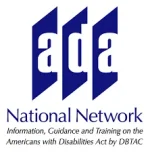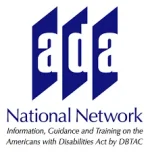An introduction to reasonable accommodations
A reasonable accommodation is any change to the application or hiring process, the job, the way the job is done, or the work environment that allows a person with a disability who is qualified for the job to perform the essential functions of that job and enjoy equal employment opportunities. Accommodations are considered reasonable if they do not create an undue hardship or a direct threat. According to the Equal Employment Opportunity Commission (EEOC) and Title I of the Americans with Disabilities Act (ADA), each request for a reasonable accommodation must be considered on a case-by-case basis. This page reviews the various phases of the reasonable accommodation process.
The first step in the reasonable accommodation process is for the employee to disclose their disability, because employers are only required to accommodate known disabilities. Each workplace has its own process for setting up reasonable accommodations. It can be helpful to review the employee handbook or company policies so that you can enter the conversation prepared. After an employee discloses a disability to their manager or to human resources, the discussion about potential reasonable accommodation can begin. An example of disability disclosure would be an employee telling their employer that their wheelchair cannot fit under the desk in their office. An employee usually needs to state how their disability is impacting their ability to perform their job in order for the reasonable accommodation process to begin. Disability disclosure should never be ignored. Requests for reasonable accommodation can be verbal, but having written documentation of the request is beneficial for both the employee and the employer.
Work together to determine the need for the most appropriate reasonable accommodation
The reasonable accommodation process should be an interactive dialogue between an employee and an employer. The goal is to understand the barrier the employee is facing and find an effective solution. The employer and employee can engage in a discussion about what accommodations might be useful. Once the conversation about a reasonable accommodation has started, it's helpful for the employer to provide the employee a brief overview of the next steps in the process. Medical and disability-related information is shared on a need-to-know basis, so employers must maintain confidentiality when discussing accommodations. The ADA National Network FAQ page on an employer's recordkeeping requirements under the employment provision of the ADA goes into more detail. If an employer plans to deny an accommodation request, they should have a prepared reason to give to the employee for why the request was denied.
Obtain preliminary documentation
If the disability and/or need for an accommodation is not obvious, the employee may be required to provide documentation from the appropriate health or rehabilitation professional. The section of the Employment Resource Hub on interviews, hiring, and examinations goes into more detail about this process.
Identify an effective accommodation
Both the employer and the employee are important participants in the process of finding an effective reasonable accommodation. The employee often knows what accommodations will work best for themselves, because they know the barriers presented by their disability. The employer should participate, as they are familiar with the systems, policies, and practices within the organization. In the end, it is the employer who decides what accommodation is put into place, but it must be effective in resolving the functional limitations presented by the disability.
Implement accommodation, document process, and follow up on result
Once an accommodation is chosen, the employer and employee should make a plan to put it into effect on the job, including any necessary training for the employee.
The interactive accommodation process should be ongoing. The employer and the employee should continue communicating to determine if the accommodations are working and make adjustments accordingly.
All parties involved should document information about the reasonable accommodation process to maintain an accurate record, so that they can review the process and know what they have done to act on the accommodation. This includes keeping track of important dates, actions taken, and adjustments made to assure continued success.
A reasonable accommodation is any change to the application or hiring process, the job, the way the job is done, or the work environment that allows a person with a disability who is qualified for the job to perform the essential functions of that job and enjoy equal employment opportunities. Accommodations are considered reasonable if they do not create an undue hardship or a direct threat. According to the Equal Employment Opportunity Commission (EEOC) and Title I of the Americans with Disabilities Act (ADA), each request for a reasonable accommodation must be considered on a case-by-case basis. This page reviews the various phases of the reasonable accommodation process.
Get the process started
The first step in the reasonable accommodation process is for the employee to disclose their disability, because employers are only required to accommodate known disabilities. Each workplace has its own process for setting up reasonable accommodations. It can be helpful to review the employee handbook or company policies so that you can enter the conversation prepared. After an employee discloses a disability to their manager or to human resources, the discussion about potential reasonable accommodation can begin. An example of disability disclosure would be an employee telling their employer that their wheelchair cannot fit under the desk in their office. An employee usually needs to state how their disability is impacting their ability to perform their job in order for the reasonable accommodation process to begin. Disability disclosure should never be ignored. Requests for reasonable accommodation can be verbal, but having written documentation of the request is beneficial for both the employee and the employer.
Work together to determine the need for the most appropriate reasonable accommodation
The reasonable accommodation process should be an interactive dialogue between an employee and an employer. The goal is to understand the barrier the employee is facing and find an effective solution. The employer and employee can engage in a discussion about what accommodations might be useful. Once the conversation about a reasonable accommodation has started, it's helpful for the employer to provide the employee a brief overview of the next steps in the process. Medical and disability-related information is shared on a need-to-know basis, so employers must maintain confidentiality when discussing accommodations. The ADA National Network FAQ page on an employer's recordkeeping requirements under the employment provision of the ADA goes into more detail. If an employer plans to deny an accommodation request, they should have a prepared reason to give to the employee for why the request was denied.
Obtain preliminary documentation
If the disability and/or need for an accommodation is not obvious, the employee may be required to provide documentation from the appropriate health or rehabilitation professional. The section of the Employment Resource Hub on interviews, hiring, and examinations goes into more detail about this process.
Identify an effective accommodation
Both the employer and the employee are important participants in the process of finding an effective reasonable accommodation. The employee often knows what accommodations will work best for themselves, because they know the barriers presented by their disability. The employer should participate, as they are familiar with the systems, policies, and practices within the organization. In the end, it is the employer who decides what accommodation is put into place, but it must be effective in resolving the functional limitations presented by the disability.
Implement accommodation, document process, and follow up on result
Once an accommodation is chosen, the employer and employee should make a plan to put it into effect on the job, including any necessary training for the employee.
The interactive accommodation process should be ongoing. The employer and the employee should continue communicating to determine if the accommodations are working and make adjustments accordingly.
All parties involved should document information about the reasonable accommodation process to maintain an accurate record, so that they can review the process and know what they have done to act on the accommodation. This includes keeping track of important dates, actions taken, and adjustments made to assure continued success.















